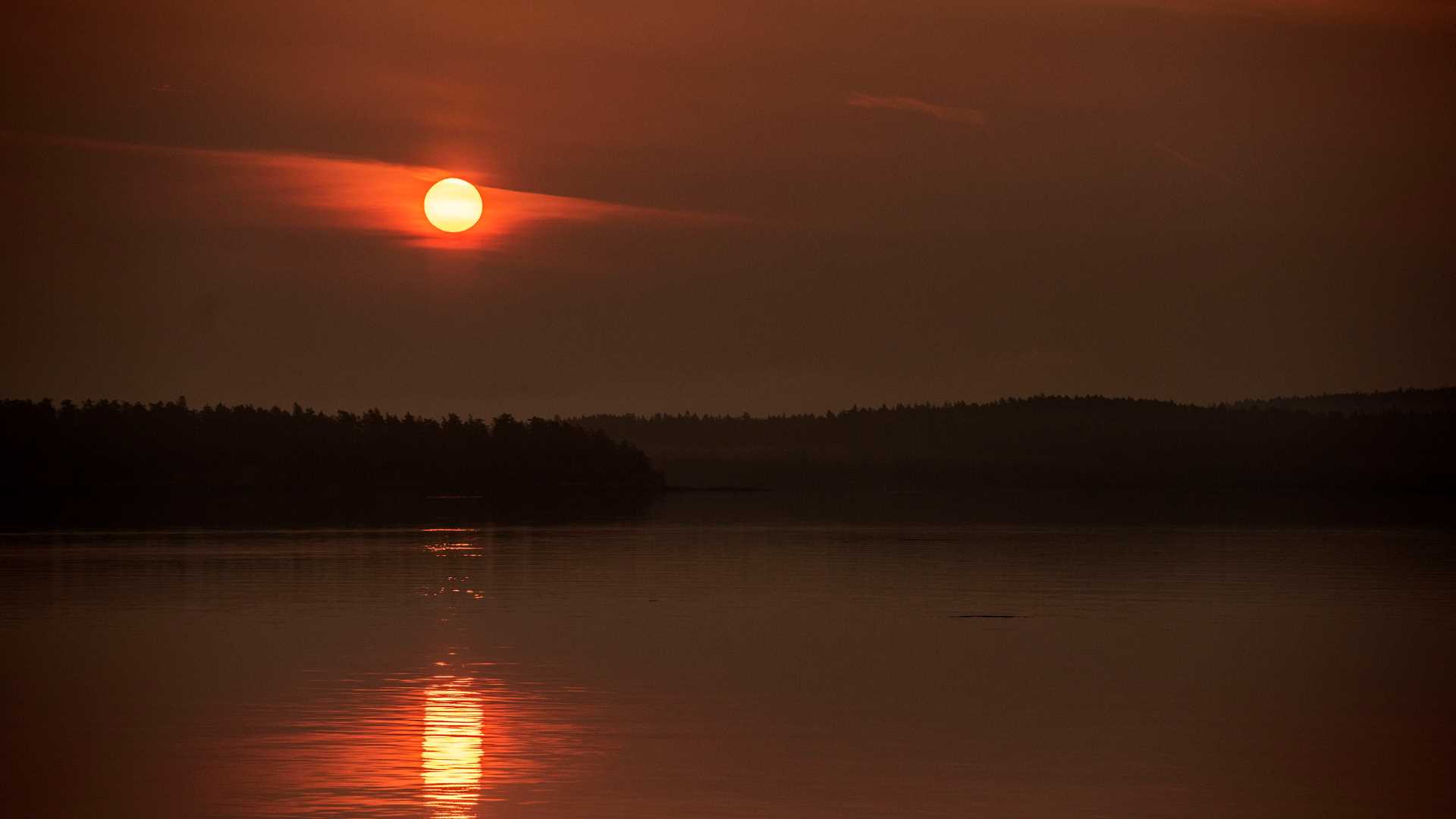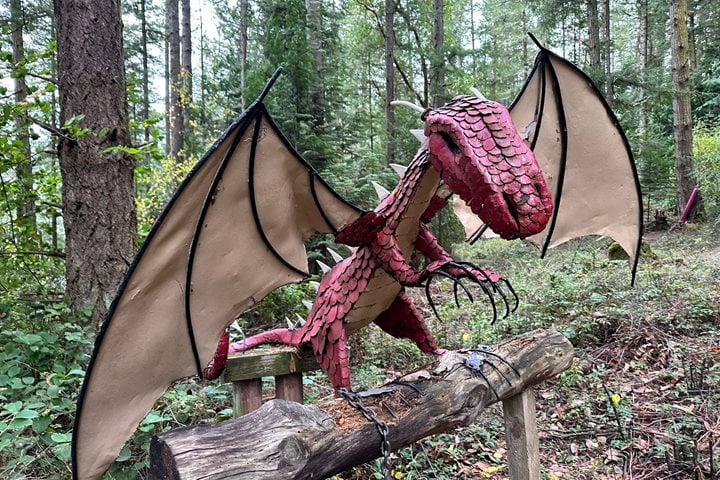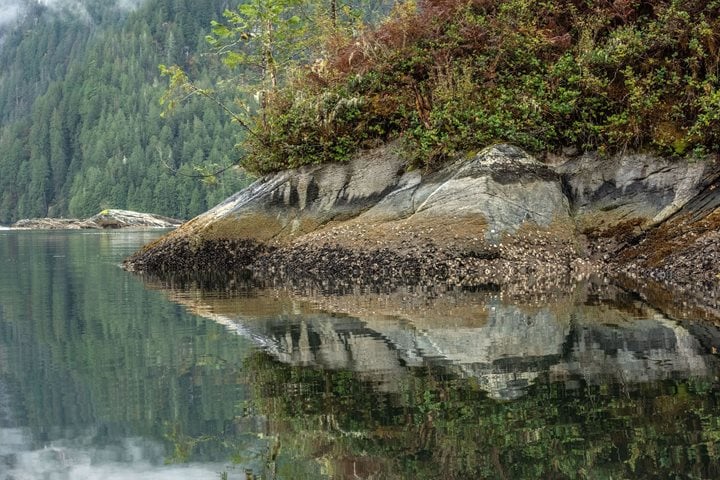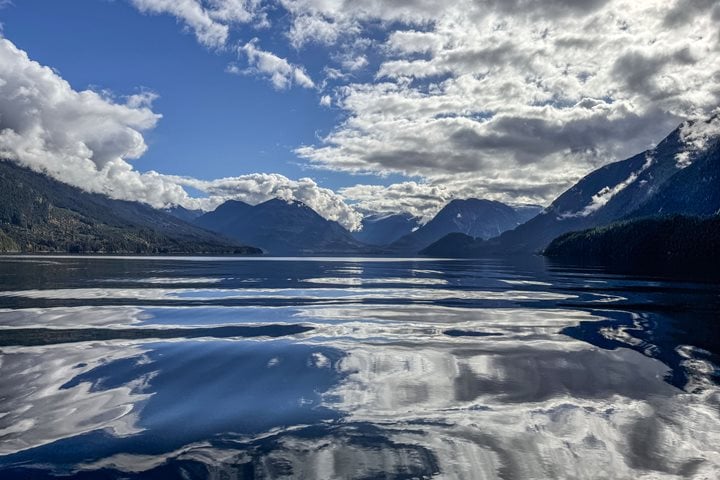National Geographic Venture cruised in still, calm seas, making her way towards our morning destination of Friday Harbor and San Juan Island. Due to many forest fires and three months without rain, our sunrise was a deep reddish orange…a smokey sunrise in these northwestern waters of Washington State.
We were scheduled for a 9:00 a.m. meeting with customs for our planned entry into the United States. Our day was spent exploring the waters in and around the San Juan Islands. These islands are part of an archipelago that wraps around the southern end of Vancouver Island. Once our work at customs was completed, we were ready to begin our morning activities on San Juan Island.
We divided into two groups, and once again, we headed out for a short drive to both English and American Camps, two National Parks on San Juan Island. At each stop, we had time for a short hike to see the highlights of each location. San Juan Island is the center of what was once a huge political battle between the United States and Great Britain. Eventually, the battle was settled without a single shot fired (except for one pig), and the islands were divided between the two countries. Today we were in the group of islands that belong to the United States.
In 2018, on the 100-year anniversary of the National Park System in the United States, several Indigenous groups across the country petitioned the National Park organization for the right to bring in a monument to commemorate their unseeded and ancestral lands, many of which are located inside the National Parks of the U.S. While at English Camp, we visited a site where the Lummi Nation raised three totem poles commemorating a style of fishing called reef-netting. These Indigenous monuments are part of a move towards reconciliation between Indigenous peoples and non-native peoples of the United States.
After visiting both camps and yet another lovely lunch on the ship, we had an opportunity to spend some time visiting the town of Friday Harbor. We wandered many small streets and took in island life.
By midafternoon, we were all back on board, and National Geographic Venture headed out into the waters surrounding San Juan Island. Our destination was Cattle Pass, a small body of water that runs between Lopez and San Juan Islands. During our journey, we were invited into the forward lounge for a presentation by researchers from the San Juan Island Center for Whale Research. Dr. Michael Weiss- Research Director, Dr. Darren Crofrt- Scientific Advisor, and Katie Jones- Senior Staff ID Specialist all came aboard and spent an hour introducing us to the Center for Whale Research by telling the story of its history on San Juan Island, which goes back more than forty years.
Expedition leader Dana then announced a surprise Zodiac cruise! Our special guests would be joining us for a Zodiac ride to the southern end of San Juan Island to an area between Lopez and San Juan Islands, where there is a haul out for Steller sea lions. We were fortunate to be in slack water between tides, giving us excellent, calm conditions as our four Zodiacs headed out for two rounds of watching these animals. The sun was heading towards sunset, and light wispy clouds were in the sky. We enjoyed very calm conditions in a place that often has ripping currents, especially at tide changes. During our second round, we neared the haul out. Just at the southern tip of San Juan and right under the lighthouse, one of our guests spotted a rather large dorsal fin! Four Zodiacs made their way a short distance and were treated to about twenty minutes of watching transient killer whales doing their usual movements through the waters of Haro Strait. It was a rare sight in gorgeous sunset light. We were all pinching ourselves at our good fortune. We took a moment to be present as we watched and listened to transient killer whales moving and searching for prey, as they have done since the dawn of time in this place called the Northwest Coast.







